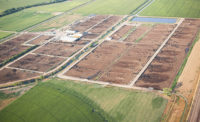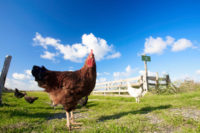Consumers increasingly demand antibiotic-free meat and poultry. So how do processors prevent contamination during the pre-harvest stage without using this common antimicrobial?
“Antimicrobial resistance [AMR] is frequently being blamed, at least in part, on use of antimicrobials in production,” says Keith E. Belk, professor, department of animal sciences, Colorado State University, Fort Collins, Colo. “There is not good evidence about whether this is an accurate assumption or not, but our studies thus far indicate that very little AMR is transmitted via the food [meat] chain.”
Nevertheless, many consumers continue to demand reduced use of antibiotics in agriculture — so processors are looking for ways to eliminate or reduce the need for them.
Colorado State University, for example, has researchers working with large research partners on a series of projects that aim to replace Tylosin, an antibiotic routinely fed to livestock during the finishing production stage.
“We feel that this is a likely target for improving pre-harvest food safety — at least from the perception viewpoint,” Belk says.
At the farm level, biosecurity practices are always the best intervention, but producers also rely on overall health monitoring, and interventions through vaccines and, in other cases, with antibiotics, says Rafael Rivera, manager, food safety and production programs, U.S. Poultry & Egg Association, based in Tucker, Ga.
“With the veterinary feed directive coming into effect recently and the trends toward antibiotic-free production, the industry has had the need to rethink its approach to general husbandry and use new ingredients in feeds, such as pre- and probiotics to help manage bacterial populations inside the gut and around the birds’ environment,” Rivera says.
Cleaning and disinfection between flocks has also acquired a new level of importance, he says.
“It’s not just about disease control anymore; it also helps controlling foodborne pathogens at the farm level,” says Rivera.
At the plant level, new interventions such as part washes and sprays are being used to meet the new parts performance standards and reduce pathogen levels even more, Rivera says.
“The important thing is tracking your progress and applying what you learn from flock to flock,” Rivera says. “There is no standard way of minimizing pathogens pre- and post-harvest.”
A multiple-hurdle approach is still the gold standard for pre-harvest interventions as strategies are needed that encompass pre-harvest technologies all the way to the finished product.
“Although there are multiple hurdles on treating the carcass, the emphasis has moved upstream to … not cross-contaminating the carcass in the beginning of the process,” says Angie Siemens, vice president of food safety, quality and regulatory for Cargill Protein in Wichita, Kan.
Optimizing and reducing the variation in each step can improve the overall result. “Every job on the floor is well-defined and monitored to assure appropriate behaviors are maintained,” Siemens says.
In addition, new intervention spray cabinets that have more monitoring capabilities, use less water and direct the antimicrobial more appropriately are some of the new application methods available.
“Antimicrobial intervention application continues to be our biggest hurdle,” Siemens says.
Improvements in real-time data from remote video auditing and operational sensors help provide immediate feedback to the harvest line, so immediate corrective action can be taken, she says.
Imaging software also provides real-time feedback on detection and quantification of contamination or foreign material.
“We are mostly working to optimize the current [antimicrobial interventions] technologies by a systems review,” says Siemens. “By looking at the entire system, we do not look at each intervention independently but by understanding all the procedures and interventions from live animal to finished package.”
Cattle conditions continue to present issues such as dirty or muddy cattle.
“We are having a dialogue with feedlot operators, and there are an increased number that are helping to ensure that their cattle are cleaner coming into the plants,” Siemens says. “There are some trials being conducted with probiotics and other feed augments that show some promise, however, not consistently. Many factors affect the shedding of E. coli and Salmonella which impact the success of these products.”
Today’s larger cattle present their own set of challenges regarding ensuring antimicrobial treatments are applied to all of the carcasses in some of the cabinets, she says.
To prevent residues today, there is more dialogue between processors and live-animal suppliers, so suppliers have a greater appreciation for the potential consequences of residue failures.
“The detection systems for physical hazards throughout the supply chain [including grind] have become better; thus, there is a better understanding that preventing the potential for a physical hazard is a better approach than hoping to find all the physical hazards that may exist,” Siemens says. NP





Report Abusive Comment